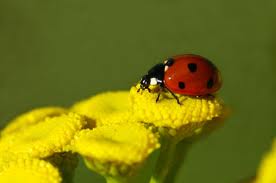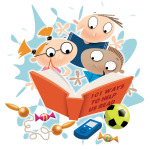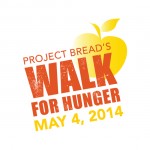
 Our Holiday Party was held at my home. Au Pairs brought dishes from their country to serve with a full turkey dinner. There was a traditional Yankee Swap after which everyone was divided into teams and were given tissue paper, cotton balls, streamers and masking tape to create a Santa. The results were amazing!
Our Holiday Party was held at my home. Au Pairs brought dishes from their country to serve with a full turkey dinner. There was a traditional Yankee Swap after which everyone was divided into teams and were given tissue paper, cotton balls, streamers and masking tape to create a Santa. The results were amazing!
Tag Archives: activities
Blueberry Picking

Ripe for the picking!
It is time for blueberries – picking is ripe!
Consider taking the kids to Honey Pot Orchard in Stow. Not only can you pick berries in the patch, you can have fun in the Hedge and tunnel maze, and picnic by the barnyard animals.
THE BLUEBERRY PATCH
The blueberry patch is open for picking with lot’s of berries. Go to the store to get information about container sizes (which they provide) and price. The containers take a long time to fill so if you’re with little ones be careful about the size you buy!
Cider donuts and caramel apples made fresh daily and can also be purchased at their store.

race to the center!

race to the center!
The Hedge Maze
Go and have lots of fun getting lost in the Hedge maze, the exact replica of the famous ‘Hampton Court’ Maze in England. Great fun for the kids, ages 4 thru 11. There is also a Tunnel maze for children (no adults) to crawl through. All for $1.50 per person.
Barnyard Animals

At the Barnyard!
Visit with the barnyard animals – “3 little pigs”, 10 energetic goats playing on their goat walk,
the never ending cock-a-doodle-doo
roosters,
bunnies
and ducks.
Water Safety Tips from the Red Cross
 Take Steps to Stay Safe Around Water
Take Steps to Stay Safe Around Water
Swimming is the most popular summer activity.
Follow these safety tips whenever you are in, on or around water with you.
Make Water Safety Your Priority
- Swim in designated areas supervised by lifeguards.
- Always swim with a buddy; do not allow anyone to swim alone. Even at a public pool or a lifeguarded beach, use the buddy system!
- Ensure that everyone in the family learns to swim well. Enroll in age-appropriate Red Cross water orientation and Learn-to-Swim courses.
- Never leave a young child unattended near water and do not trust a child’s life to another child; teach children to always ask permission to go near water.
- Have young children or inexperienced swimmers wear U.S. Coast Guard-approved life jackets around water, but do not rely on life jackets alone.
- Establish rules for your family and enforce them without fail. For example, set limits based on each person’s ability, do not let anyone play around drains and suction fittings, and do not allow swimmers to hyperventilate before swimming under water or have breath-holding contests.
- Even if you do not plan on swimming, be cautious around natural bodies of water including ocean shoreline, rivers and lakes. Cold temperatures, currents and underwater hazards can make a fall into these bodies of water dangerous.
- If you go boating, wear a life jacket! Most boating fatalities occur from drowning.
- Avoid alcohol use. Alcohol impairs judgment, balance and coordination; affects swimming and diving skills; and reduces the body’s ability to stay warm.
Prevent Unsupervised Access to the Water
- Install and use barriers around your home pool or hot tub. Safety covers and pool alarms should be added as additional layers of protection.
- Ensure that pool barriers enclose the entire pool area, are at least 4-feet high with gates that are self-closing, self-latching and open outward, and away from the pool. The latch should be high enough to be out of a small child’s reach.
- If you have an above-ground or inflatable pool, remove access ladders and secure the safety cover whenever the pool is not in use.
- Remove any structures that provide access to the pool, such as outdoor furniture, climbable trees, decorative walls and playground equipment.
- Keep toys that are not in use away from the pool and out of sight. Toys can attract young children to the pool.
Maintain Constant Supervision
- Actively supervise kids whenever around the water—even if lifeguards are present. Do not just drop your kids off at the public pool or leave them at the beach—designate a responsible adult to supervise.
- Always stay within arm’s reach of young children and avoid distractions when supervising children around water.
Know What to Do in an Emergency
- If a child is missing, check the water first. Seconds count in preventing death or disability.
- Know how and when to call 9-1-1 or the local emergency number.
- If you own a home pool or hot tub, have appropriate equipment, such as reaching or throwing equipment, a cell phone, life jackets and a first aid kit.
- Enroll in Red Cross home pool safety, water safety, first aid and CPR/AED courses to learn how to prevent and respond to emergencies.
Gardening & Learning about insects
Gardening
Children love to care for other living things, and plants are an easy choice that can give a great sense of accomplishment. Check with your host parents about where you can garden. Ideally, your little garden will have at least six hours of sun a day.
For outdoor gardening you will need to buy some seeds. If your garden has less than six hours of sun, choose seeds that can grow in “partial” sun. Select flower seeds that germinate quickly. The back of the seed packet will tell you how long before the plants sprout. Marigolds and morning glories are easy to grow and will come up quickly. Buying vegetable seeds will allow children to eat and share what they grow. Radishes are the fastest growing vegetable – from seed to salad in just three weeks. Green beans, tomatoes, summer squash and cucumbers are other good choices, but they do take longer. Be sure to plant extra seeds because not every one will germinate. This is an important lesson for children – mistakes are natural and an inevitable part of life. If you are starting late and want to make sure you will have a vegetable harvest, you can also buy small plants at a local plant nursery.
Before you plant the seeds, use a shovel, trowel or spade to loosen the soil. Remove weeds, stones and grass from the area. If the soil is very hard (like clay) or very sandy, it would be a good idea to add peat moss or compost to the soil. You will also need a hose or a watering can so that the children can water the earth when it doesn’t rain. If the plants look droopy or the soil feels dry, it is time to water. It is very important to water even before the plants sprout. It is best to water early in the morning or in the late afternoon.
Gardening includes other simple science lessons, all concepts that children can understand. Plants lean or turn towards light. Plants use water, but some of it evaporates into the air. What happens to the water that has evaporated? Without water plants will dry up and die. Plants come from other parts of the world, and sometimes their form gives clues to their origin. Can you find seeds that are native to your country?
When you go out into the garden, take care of the plants, pulling up weeds gently and also any sprouted seeds that are growing too close to another plant. But also look around and look closely at the ground to find birds and bugs that are a part of gardening. You can discuss how living things rely on plants to live, and how the plants need their animal friends. Birds spread seeds; earthworms loosen the dirt for the roots of the plants. What do bees do?
Look for books about gardening in the library. Carrot Seed by Ruth Krauss is a wonderful book for very young children. Take photographs of your gardening project. It will be surprising and satisfying to look at the starting photos at the end of the harvest. And don’t forget to put on sunscreen before you do your gardening!

Lady Bug
Learning about insects

Lady Bug
Talking to children about insects is a fun activity in the summer when there are so many around!
Some easy facts for you to know:
- There are more kinds of insects than any other kind of animal.
- They live all over the world, even in ice and snow.
- They never have more than 3 pairs of legs. If it has more, it’s not an insect!
- All insects come from eggs.
Outside Activity: To learn more about insects, go on a hunt outside. Collect the insects you find in a jar and then examine them with a magnifying glass.
Recipe: Make a snack of “ants on a log.” Spread peanut butter on a stick of celery and then add raisins on the top.
Read: Children up to age seven will enjoy “The Very Hungry Caterpillar” by Eric Carle. Look for it in the library.
Inside activities:
- Make a caterpillar from a cardboard egg carton cut in half lengthwise. Turn each section upside down to paint with water-based paint. Use pipe cleaners to make the antennae. Draw or glue eyes and a mouth.
- Make a butterfly by putting small pieces of colored tissue paper in a clear sandwich bag. Seal the bag. Squeeze the bag in half with the sealed edge at the top. Twist a tie around the middle and adjust the end of the twist tie to make antennae.
Mother’s Day
Sunday, May 11, 2014
Mother’s Day in the United States is annually held on the second Sunday of May. It celebrates motherhood and it is a time to appreciate mothers and mother figures. Many people give gifts, cards, flowers, candy, a meal in a restaurant or other treats to their mother and mother figures, including grandmothers, great-grandmothers, stepmothers, and foster mothers.
Help your kids make something special for mom this year!
Check out these crafts on Pinterest
BOSTON WALK FOR HUNGER
This year again Au Pair in America will have a team and join the Walk for Hunger
A Regional Event with au pairs from the greater Boston area.
All au pairs and host families who would like to join our team please register on the link below
Team name: Au Pair in America
It’s free to register but you can certainly donate as much as you want. Please ask you host family, friends or neighbors if they would donate money to your team.
Celebrate Boston!
Music & Movie Fridays at the
Boston Harbor Hotel
Boston Harbor Hotel
(plus more free events – check out this site)
click the link here –>Celebrate Boston!
Make Way for Spring

March 10th: Daylight Savings Time. Be sure to set your clocks forward before going to sleep. The kids maybe groggy this week as they adjust to the time change. Please be sensitive to that as you go through the week.
 March 17th: St. Patrick’s Day. This Irish holiday has been celebrated in the USA since 1737. Traditional icons that mark the holiday: Leprechauns, Pots of Gold, Rainbows, Shamrocks and the Color Green! There will be local parades in many of our towns…Stamford, Danbury and of course in NYC. It might be fun to go and experience this tradition.
March 17th: St. Patrick’s Day. This Irish holiday has been celebrated in the USA since 1737. Traditional icons that mark the holiday: Leprechauns, Pots of Gold, Rainbows, Shamrocks and the Color Green! There will be local parades in many of our towns…Stamford, Danbury and of course in NYC. It might be fun to go and experience this tradition.
March 25: Passover begins. Passover, also known as Pesach or Pesah, is a Holy Day, observed by several religions, begins today and lasts seven or eight days, depending on your beliefs. It commemorates the exodus and freedom of the Israelites from Egypt.
March 31: Easter is an annual festival commemorating the resurrection of Jesus Christ. It is always celebrated on a Sunday
While the storm goes through: Reading to Children
 It is never too early to start reading to children. Children of all ages enjoy having stories read to them. Reading, cuddling up on a couch or reading before a child takes a nap or goes to sleep at night, is comforting for the child. This special time together builds a bond, take the time to read to the children in your life.
It is never too early to start reading to children. Children of all ages enjoy having stories read to them. Reading, cuddling up on a couch or reading before a child takes a nap or goes to sleep at night, is comforting for the child. This special time together builds a bond, take the time to read to the children in your life.
- Read slowly, this gives children time to thing about what you are reading
- Change your voice for different characters, or read in a softer voice from some characters,
 louder for others. A sing song voice is fun for young children.
louder for others. A sing song voice is fun for young children.
- Share a picture book with a child and have them tell you a story from the pictures!
- Read every day!
- Children have favorites, so don’t worry if they want the same story every day, but add a few others so they can develop new favorites.
- Talk about the story, ask the children what was their favorite part. Let them share the story back to you or their parents!
- Do arts and crafts about the story. Have them draw you a picture about the story.
- If the children are old enough to read themselves, have them read you a story. Alternate, you read, they read. This will encourage them to read more!
- Have fun, read stories about subjects you and the children enjoy!
- Turn off the TV and computer and read!
Au Pair in America at the Head of the Charles Regatta
One of the most well known competitions of the international rowing world took place this past weekend on the banks of the Charles River in Cambridge, Massachusetts. Over twenty au pairs gathered there to have hot chocolate and fudge brownies, while they people watched and cheered on their favorite teams rowing up the river in sculls, two person, four person, and eight member boats.
Olympic teams competed in fierce competition with their own best records, with each other, and with the increasing wind conditions. University teams such as the University of Washington and University of Virginia were au pair favorites and with all of the cheering and support, they both took first place in the Championship and Collegiate divisions respectively. Despite the cheering the cluster gave them, the Naval Academy did not fare as well.
Crowds estimated at over one hundred thousand lined the riverside from the Boston Harbor and the river basin all the way to Watertown, on both the Cambridge and Boston sides. To add to the festivities, the autumn foliage was in full display. It was a true New England day and as the sun began to sink, au pairs filtered off to enjoy the remaining Sunday evening fun.
Click here for pictures Pics of Head of the Charles




